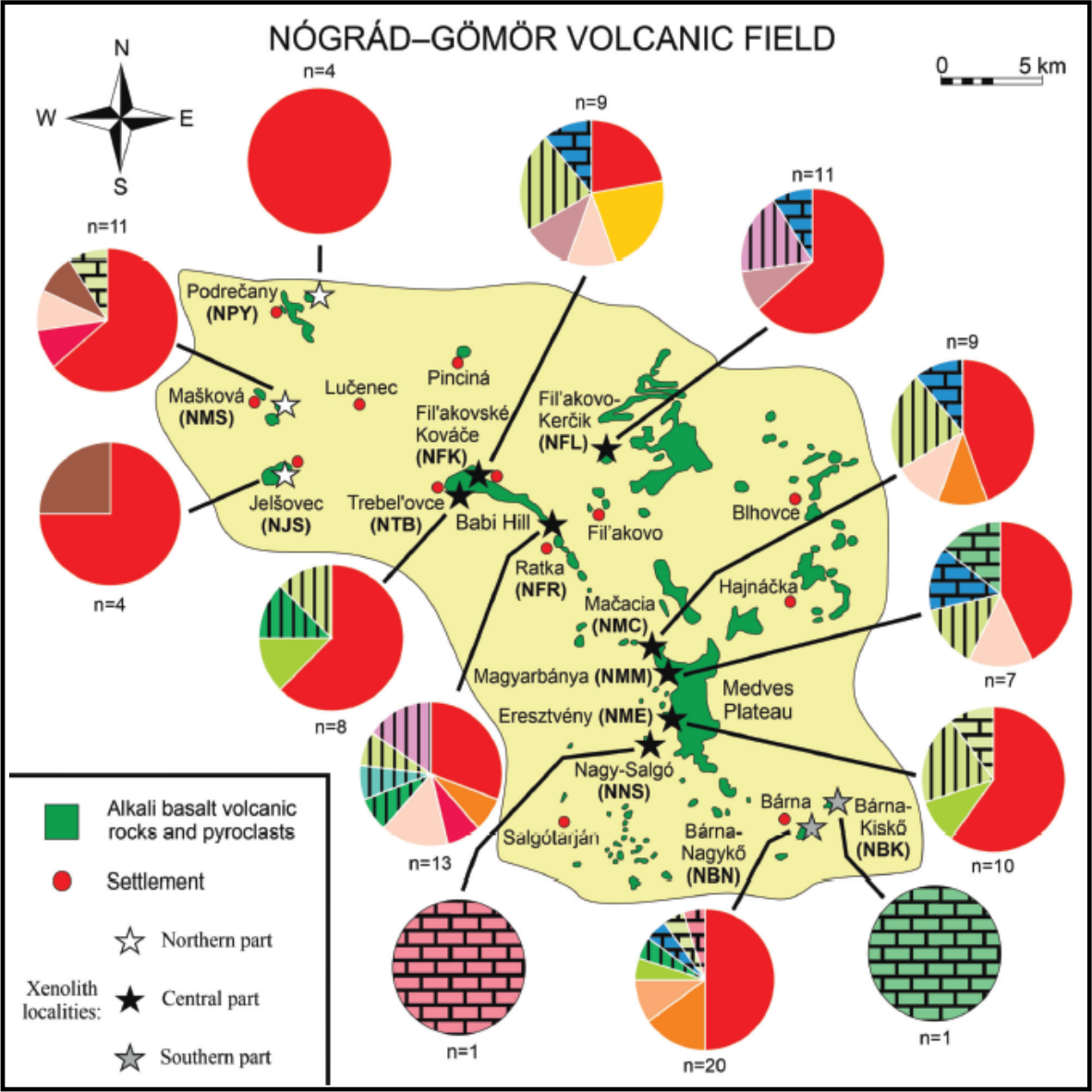Cluster analysis on a suite of upper mantle xenoliths from the Nógrád–Gömör Volcanic Field (Northern Pannonian Basin)
Abstract
The Nógrád–Gömör Volcanic Field is one of the most thoroughly studied upper mantle xenolith-bearing localities in the Carpathian–Pannonian region. Dozens of upper mantle xenoliths collected there have been investigated from various aspects in the past decades. Major element compositions of upper mantle xenoliths available in scientific papers on the Nógrád–Gömör xenoliths were extracted to build a database. This database includes the geochemical composition of the rock-forming minerals (olivine, pyroxenes, spinel) of 112 upper mantle xenoliths. Using the data compiled in this database, we applied the CluStress algorithm to perform cluster analysis. The results led to the division of 2 supergroups (I and II) and 17 groups within them. Supergroup I was split into two subgroups (Supergroup I/a and I/b). The xenoliths of Supergroup I/a and I/b are distinguished by their orthopyroxene/clinopyroxene modal composition ratios (mainly >1.5 and <1, respectively) as well as their olivine Mg-numbers (dominantly >0.89 and <0.89, respectively). Most of the xenoliths (~50% of all classified xenoliths) were sorted into Group 1 within Supergroup I/a, and they appear at almost all xenolith-bearing localities in the Nógrád–Gömör. The Group 1 xenoliths exhibit narrow compositional ranges regarding their major element relationships. Due to their common occurence and spatial distribution, these rocks were considered to represent an ambient lithospheric mantle underneath the study area. The geochemical characteristics of the other groups allowed their linking to different events described in former scientific works. At least 11 out of the 17 distinguished groups (i.e. ~35% of the classified xenoliths) are strongly related to the Neogene alkali basaltic volcanism. This suggests that the pre-Neogene rootzones of volcanic fields in the Carpathian–Pannonian region were significantly modified by intensive melt-rock reactions between upward migrating basaltic melts and wall rocks, which took place in the last ~10 million years.
















